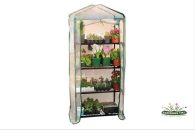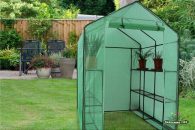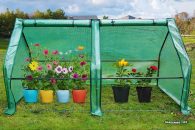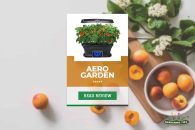Everyone loves buying a well finished and packaged item, and gardening hoses are no different. You have to make sure you do not fall into the temptation of buying a hose that looks appealing to you and forgets to check the underlying material that makes it, as this might cause you so much unnecessary trouble and frustrations.
One of the biggest challenges is to buy a good dependable hose that will serve you for many years without kinking or leak. However, how do you pick the best hose for your garden?
Well, its simple, we have compiled a list of the five best garden hoses and written an unbiased garden hose reviews best of each to make your buying decision quicker and easier.
If you are in a hurry, here is a quick look at the top hoses that we are reviewing today:
| Apex NeverKink | YEAHBEER Latex Core | FlexiHose Upgraded | Water Right 400 Series | Flexzilla Garden Hose |
|---|---|---|---|---|
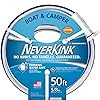 |
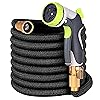 |
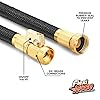 |
 |
 |
|
|
|
|
|
| Lifetime Guarantee | 1 Year Warranty | Lifetime Guarantee | 5 Year Warranty | Limited Lifetime |
| Check Price | Check Price | Check Price | Check Price | Check Price |
Garden Hose Reviews
Apex Teknor NeverKink, 7612-50 Review
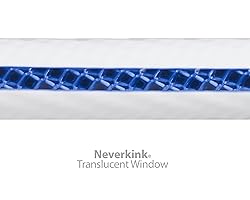 They have achieved this by using a unique reflex mesh technology whereby a network of the mesh is connected to reinforce the walls, hence preventing any kinks, twists or tangles. However, this comes with a sacrifice of flexibility. It is not as flexible, but it won’t stop you from watering your crops from whatever angle you wish. It also comes fitted with leak-proof coupling at the edges for easier attachment and then reinforced with rigid sleeves that prevent any kinking at the faucet. You can also use this hose for ferrying drinking water as it is FDA approved.
They have achieved this by using a unique reflex mesh technology whereby a network of the mesh is connected to reinforce the walls, hence preventing any kinks, twists or tangles. However, this comes with a sacrifice of flexibility. It is not as flexible, but it won’t stop you from watering your crops from whatever angle you wish. It also comes fitted with leak-proof coupling at the edges for easier attachment and then reinforced with rigid sleeves that prevent any kinking at the faucet. You can also use this hose for ferrying drinking water as it is FDA approved. 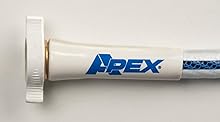 You should, however, let the water run through it for about 20-25 minutes to clean off any chemicals that might be sticking to the walls. You might also want to know that the Apex Teknor is made in the USA. Apex Teknor NeverKink comes with the following features:
You should, however, let the water run through it for about 20-25 minutes to clean off any chemicals that might be sticking to the walls. You might also want to know that the Apex Teknor is made in the USA. Apex Teknor NeverKink comes with the following features: - Anti-kink Technology
- Drinking Water Safe
- Ergonomic leak-proof Coupling
- Made in the USA
FlexiHose Upgraded Review
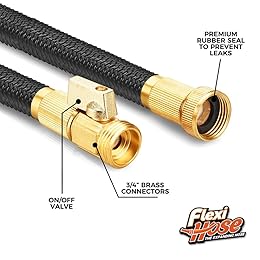 It is also only 17 feet long but expands once water starts running through to 50 feet hence saving on space. Similar to the YEAHBEER hose reviewed above, the FlexiHose Upgraded comes with the following features:
It is also only 17 feet long but expands once water starts running through to 50 feet hence saving on space. Similar to the YEAHBEER hose reviewed above, the FlexiHose Upgraded comes with the following features: - 17 FT to 50 FT Expandable Garden Hose
- Extra Strength
- 3/4″ Solid Brass Fittings
- No-Kink Flexible Water Hose
- 8 Function Spray Included
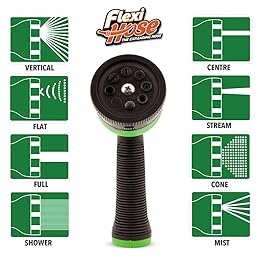 The only downside with this hose does not expect the pressure of the water from it to be as high as that from normal garden hoses. You additionally get a free lifetime replacement warranty whenever you encounter a problem or even a refund. Check on Amazon
back to menu ↑
The only downside with this hose does not expect the pressure of the water from it to be as high as that from normal garden hoses. You additionally get a free lifetime replacement warranty whenever you encounter a problem or even a refund. Check on Amazon
back to menu ↑
Water Right 400 Series Review
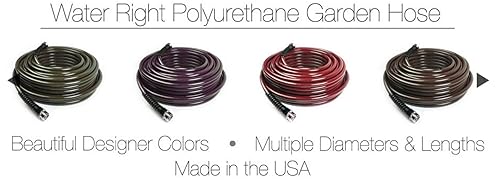 Just like other hoses, this also develops kinks, but the best thing about it is that its soft walls ensure that the kinks are only temporary after which it goes back to its original state. It is super light as it weighs only 3 pounds per 50 feet making it ideal to carry and move around. Each of its ends is additionally fitted with an industrial grade brass nozzle for easier connection and reduced kinking on the edges.
Just like other hoses, this also develops kinks, but the best thing about it is that its soft walls ensure that the kinks are only temporary after which it goes back to its original state. It is super light as it weighs only 3 pounds per 50 feet making it ideal to carry and move around. Each of its ends is additionally fitted with an industrial grade brass nozzle for easier connection and reduced kinking on the edges.  This hose costs more than the previously reviewed ones, which is no surprise considering all its amazing features.
This hose costs more than the previously reviewed ones, which is no surprise considering all its amazing features. - Made of Polyurethane
- Light Weight
- Brass Fittings
- No-Kink Flexible Water Hose
Flexzilla Garden Hose Review
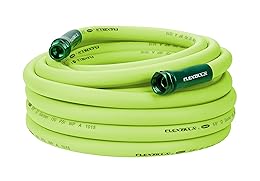 The manufacturer also assures you that this hose won’t kink at all even under high pressure, thanks to its rib inner core. It is additionally fitted with crush resistant anodized aluminum fittings on each end for easier connection. Unlike most garden hoses, this one is very light in weight, easy to coil and can be carried using only a single hand. However, there are several negatives about it. One is it starts turning color from green to black after some few months of usage and also gets covered with molds. It is not also as safe for drinking water as the manufacturer claims. The reason behind this is the manufacturer doesn’t specify the exact polymer used to make this hose, and I don’t think you would be willing to drink water from something you don’t have a clue about.
The manufacturer also assures you that this hose won’t kink at all even under high pressure, thanks to its rib inner core. It is additionally fitted with crush resistant anodized aluminum fittings on each end for easier connection. Unlike most garden hoses, this one is very light in weight, easy to coil and can be carried using only a single hand. However, there are several negatives about it. One is it starts turning color from green to black after some few months of usage and also gets covered with molds. It is not also as safe for drinking water as the manufacturer claims. The reason behind this is the manufacturer doesn’t specify the exact polymer used to make this hose, and I don’t think you would be willing to drink water from something you don’t have a clue about. 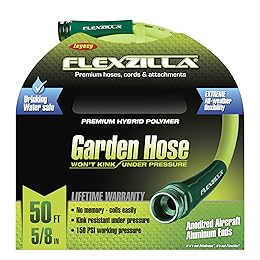 If you are looking for a hose specifically for watering plants, this is a good choice for you. Check on Amazon
If you are looking for a hose specifically for watering plants, this is a good choice for you. Check on Amazon
It’s the dream of every farmer to have bright-green leafy and flowery plants in their garden which can only happen if your crops have access to nutrients and the right amount of water.
back to menu ↑Guidelines To Purchase The Best Garden Hose
Buying a garden hose may sound like a ‘piece of cake’ kind of task, but it is not so because you need to be armed with some vital information before you roll out your hard-earned bucks and your garden hose.

Quality comes first even when you are preparing to buy your bundle of garden hose. Cheap is the word what most people would have in mind, and that would undoubtedly mean trouble in the long run.
Believe me; the long run is much shorter than the total length of your garden hose!
Hoses made out of cheap material will deteriorate pretty fast, say in less than a year or so, prompting you to unroll another bunch of currency notes for a new garden hose.
By investing wisely on better quality hoses and with the right kind of maintenance and care, you should have them with you for even ten years or more, and the hose would see your plants grow into trees if the hose has a pair of eyes!
back to menu ↑Choice of Best Garden Hoses

When asked by the shopkeeper, people usually respond by saying, “I need a standard garden hose.” So how do you define the standard? There are many factors you need to consider before you could run to the store or buy online.
Essential Things to Consider when buying a hose
Length
You need to have the right length of garden hose to facilitate a smooth watering experience.

The length of a garden hose is one of the primary aspects that many people would think, and many would opt for a fairly long one. But think again; is longer hose practical and a viable option?
A longer hose may be able to cover larger areas, but they are also more expensive and more cumbersome to pull around, which also makes them more difficult to store properly. Besides, maintenance can be difficult as draining longer hoses takes much time and rolling them up is no easy task either. So, it’s apparent that buying a longer length of hose is not always a sensible option. But, one must purchase a suitable length of hose appropriate for the gardening area.
Garden hoses are typically available in lengths from 7.5 meters to 30 meters, with many intermediate sizes in between. So, there are a good number of options to choose from.
The sensible way to determine what is best is by measuring the farthest distance from the spigot or tap and then going for a hose that is slightly longer than the measured distance.
Say, for example, the farthest distance from the valve or faucet is 20 meters then you should go for a hose length of 25 meters so that you have enough flexibility to manoeuvre the hose while watering the plants around the garden. You will have plenty of room to work without having to pull or snag the hose as this leads to damage and snagging.
Garden hose diameter
The diameter of a hose refers to the size of the inner hose tube, and this is important as it determines the amount of water the hose carry at any given point of time.
Diameter also is critical because the water pressure depends on the hose diameter.

A larger diameter hose would carry more volume of water, but the pressure would be low. Smaller diameter hose would take less amount of water but would provide greater pressure (Thus a stronger spray is possible due to the presence of higher pressure).
Garden hose diameter comes in various sizes, so it is essential to select a size that is most suitable for your gardening needs.
Sizes generally start at 3/8 inch (9mm), with options available in ½ inch (13mm) ¾ inch (19mm), and 1 inch, while some inner hose diameters reach as large as 1.5 inches (40mm).
Garden hoses with smaller inner diameters (3/8 – ½ inch) would be the ideal size. It provides an optimised combination of water flow and pressure while also being light enough to manoeuvre around.
Smaller diameter hoses with lengths of around 15m would be best for watering flower beds, pots, baskets, etc as this combination of diameter and length would provide adequate pressure for the above task.
Hose materials
The two main types of material commonly used for garden hoses are vinyl and rubber. You can also find hoses made from composite materials made from vinyl, rubber, and plastic.
Vinyl – This will be a cheaper option of the two while also being lighter and easy to use. But vinyl hoses are less durable, more susceptible to cracking, kinks, wear and tear, leading to early deterioration.

Vinyl garden hoses can also degrade faster, especially if exposed to extreme weather conditions such as sunlight and resultant UV light.
It is essential to store them properly away from exposure to severe weather. Regarding affordability, hoses made from a vinyl material are great. So, if you are on a tight budget and do not care about durability, the vinyl hose would suffice.
Rubber – Unlike vinyl, hoses made from rubber material are more robust and will last much longer. But, this also makes them more expensive and more cumbersome, which you will find challenging to manoeuvre around the expanse of your garden.
Rubber hoses are less prone to kinking and cracking, while they can withstand the more extreme elements of weather. They are also good to carry hot water, which will be useful for floor cleaning. Composite garden hoses made up of vinyl and rubber are a fantastic choice as it would have more excellent properties of both materials.
Hose strength
The strength of a garden hose refers to the overall amount of pressure that it can withstand while in use. If you exceed this amount, the hose will very likely rupture. A hose with high strength may not be needed as it is generally preferred for other tasks that require high water pressure, for, eg, a sprinkler.
Strength will usually be measured in psi or bars, and it will be written on the hose and the packaging. If you intend to use your hose for tasks involving high pressure, anything above 350 psi (24 psi) is recommended.
Hose Fitting/Coupling
The fitting or coupling of a garden hose is the attachment that connects the hose to the water supply outlet such as a tap or faucet.

Couplings are made from plastic or metal, and as you guessed correctly, plastic ones are cheaper and less durable than the metal ones.
There are a variety of ergonomically designed couplings available in the market, both metal and plastic. Metal ones stay longer and will be more expensive than plastic ones.
Kinking
Kinking occurs when the hose is too flexible and leads to splits and cracks.
Flexibility is undoubtedly required so that the hose can be quickly moved around and stored but, too much of flexibility initiates kinking and damage which reduces its lifespan.
As rubber hoses are less likely to cause kinking due to the presence of reinforcement within, it would be an excellent choice to buy rubber hoses compared to vinyl ones. When you buy a hose, try bending it to 180 degrees (U shape) and if it doesn’t cause kinking, go for it.
back to menu ↑Types of Garden Hoses
There are numerous types of garden hoses to choose from, but below are some commonly used types.
Lightweight
Commonly known as ‘light duty’ hoses, these are suitable for mostly lesser strenuous tasks as the name implies. Meaning, they can be pulled around to water a small garden.
Since they are priced low, they are very likely made from vinyl with plastic fittings and hence more prone to kinking.
They are still an excellent choice if you happen to be on a budget or for those who will only sparingly use it.
A smaller sized lightweight hose should do the job provided you don’t connect it to a sprinkler system or deploy it for a more painful task such as washing your 4WD!
Heavyweight
If you intend to use the hose for other tasks, a heavyweight option will be the best. They are more robust, typically made from rubber or a composite of rubber and vinyl, and will withstand higher pressure as it will be having metal couplings and being less prone to kinking issues.
They will be much more substantial than a lightweight hose, and it may be quite a struggle to move them around and to store in your storage room.
Flat
A flat garden hose is almost like the water hose used by firefighters as it tends to be in a flat profile when not in use and is inflated into a tubular shape when water passes through them.
Generally, they are lighter in weight, can be drained very quickly which makes them easier to roll up and store. A suitable hose reel would be appropriate for this type of hoses.
They are usually made from vinyl, making them more prone to kinking, and their pressure bearing capacity is lower as well.
Soaker
Due to their porous design, soaker hoses are designed to be used beneath the ground (at subsurface level) to allow small amounts of water to seep through into the soil continuously, providing the plant roots with a constant source of water. They are laid deeper into the ground or slightly below the surface depending on the type of plants in the garden.
Sprinklers
Sprinklers feature small sections of holes that spray water upwards.

Sprinkler hoses lay directly on top of the ground surface, providing a fine spray of water to the plants, lawns and flower beds.
Coiled
Coiled hoses are formed into a spiral shape whenever they are not being used. They can be extended into a straight hose for use, but they are generally much shorter than the other types.
They can be stored in a very compact space, but due to its coiled feature, they tend to have shorter lengths, making them more appropriate for smaller gardens and patio spaces.
Accessories
As there are many types of garden hoses in the market, there are many types of attachments too! Make sure to thoroughly check the attachments included with the hose you are buying. Some accessories may be needed to be purchased separately, so be aware of that.
A multi-functioning garden hose attachment may provide you with appropriate accessories that can be used for a sprinkler or spray gun. You may opt for a spray gun attachment that gives a variety of spray settings, as these can be great for watering different types of plants and flowers. Settings can be easily changed to achieve a different kind of spray.
A very gentle spray is needed for plants in the flowering stage which would make a fan spray a fine option while a jet spray feature provides greater pressure.
Reels
Most garden hoses come with a reel, but some may not have this useful accessory.

Reels make your hose easier to store and ensure that the hose is adequately protected from any damage.
There are a few types of reels like wall mounted and portable that comes with wheels for ease of transportation.
While you can’t entirely depend on the rain to feed your plants with water especially in summer, you will find yourself being required to water your plants often which is why you need to invest in a quality long garden hose.
A quality hose will make your gardening life easier and more enjoyable.
If you found this guide helpful, please share so others could benefit from making better purchase decisions.



